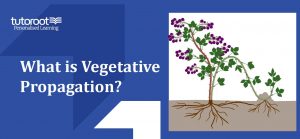What is Vegetative Propagation? – Definition, Types
All plants across various ecosystems and environments on our earth often lose certain parts such as branches, leaves, flowers, and fruits, due to different types of forces or common factors acting on them. And in order to grow these important components back, some plants employ an asexual reproduction method called Vegetative Propagation. However, if you have no idea, what Vegetative Propagation is? Then go through the article below to learn about natural vegetative propagation and its different types in much more detail.
What is Vegetative Propagation?
As said above, Vegetative Propagation is defined as asexual reproduction employed by plants, through two different processes such as regeneration and fragmentation. Besides this, vegetative propagation is commonly observed in various parts of plants like Stems, Leaves, and Roots.

Types of Vegetative Propagation
There are different types of vegetative propagation, based on whether there is human intervention or not.
- Natural Vegetative Propagation.
- Artificial Vegetative Propagation.
Natural Vegetative Propagation
As you can guess already, this type of vegetative propagation occurs naturally without any possible human intervention, and by the end of the process new naturally born plants are observed at various different parts of the plants like Leaves, Bulbs, Roots, and stems.
And below we will explain briefly how vegetative propagation occurs in these parts of the plants, like,
- Leaves – Certain leaf varieties have the ability to detach from the parent plant, and grow into their own plants through Vegetative Propagation.
- Stem – The runners that grow horizontally above the ground, and produce buds at their nodes are possible because of the vegetative propagation.
- Bulbs – Another important part of the plant, where vegetative propagation occurs, is the bulbs, an underground stem consisting of leaves and apical buds. The leaves on these bulbs play an important role in storing food.
- Roots – In some plant varieties, tubers and buds use vegetative propagation to form new plants.
Artificial Vegetative Propagation
The type of vegetative propagation, which involves humans carrying out experiments to produce new plants and buds is referred to as Artificial Vegetative Propagation. Moreover, vegetative propagation includes various different methods,
- Layering – This process involves bending the stem of a plant and submerging it under the soil. After a period of time, roots emerge from these stems, these are called layers.
- Cutting – From the name itself, as you can understand a part of the stem or leaf is cut down, and it is put in the soil, while simultaneously providing hormones to these stems to start the growth of roots.
- Tissue Culture – The process of growing different types of plants by combing multiple varieties of plant cells or tissues in one parent cell. Using this method, scientists were able to save and increase the number of endangered plant varieties across the world.
- Grafting – When a plant is cut down, and it is attached to the stem of another plant that has its roots embedded into the ground. And over a period of time, the tissues of the different plants get integrated with each other and become a single plant.
Conclusion
In the article above, we have provided complete information about the types of vegetative propagation, and vegetative propagation examples. And the Biology subject includes a vast syllabus, which the students might find hard to study on their own. In that case, it would be a better idea for them to join Online Home Tutor programs offered by various platforms including Tutoroot, as they can get access to multiple benefits. If you want to learn more about these, benefits, visit the official platform.
Frequently Asked Questions
What are the advantages of vegetative propagation?
There are many advantages to vegetative propagation, such as quick growth, superior quality produce, identical quality, and many more.
Which part of the potato is used for vegetative propagation?
Potato Tubers are the components of potatoes that actively take part in vegetative propagation.
